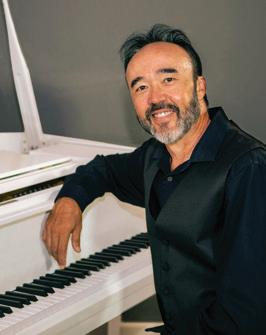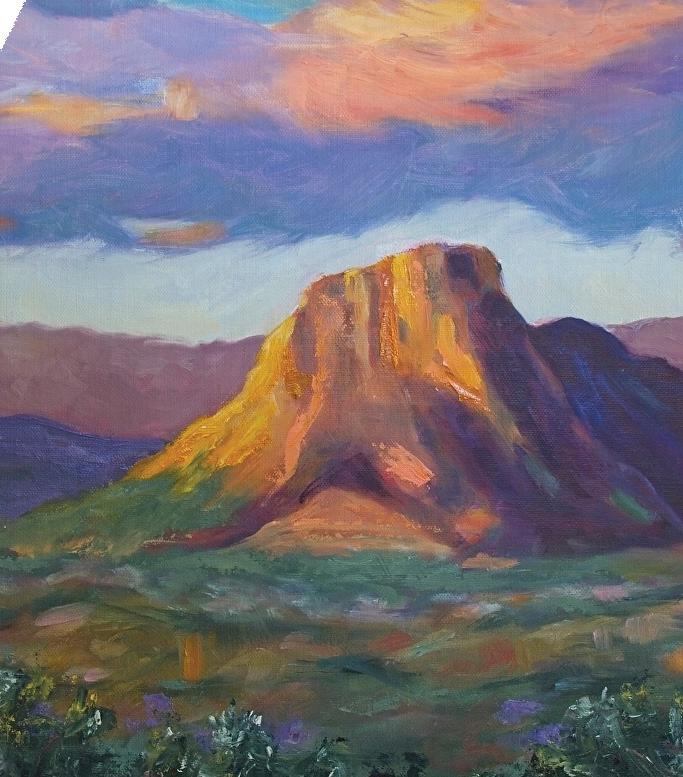
2 minute read
Communications from a Family of Hams
Local ham radio operator recognized for his outreach to 340 countries and entities
By Betsey Bruner, QCBN
It was a thrill making contact with volcanic Bouvet Island, says local ham operator Bob Wertz, marking a 47-year quest and the final confirmed contact with all 340 countries and independent entities.
“Very few hams in the world have done this and I only know of eight others in Arizona that have ever contacted all 340 entities,” he said. “This is amazing to me, as there are about 22,000 Hams just in Arizona.”

Bouvet is an island dependency of Norway, located 9,124 miles from Flagstaff between South Africa and South America and closer to the Antarctic. It has been called the most remote island on the planet and is one of the top two locations, along with North Korea, that are the most difficult to contact by ham radio.
Wertz recently was recognized for his achievement. “This is one of the highest operating awards given out by American Radio Relay League,” he said. “Reaching DXCC #340 has not been done by many Hams, so it was quite a thrill and honor for me to have accomplished it.”
It was also a daunting task, with some fantastic experiences associated with the effort.
“One of the most obscure locations I have talked to is Mount Athos in Greece. There are over 2,000 monks living there at a monastery and they only have one Ham operator. His name was Monk Apollo. I thought this might be the most difficult contact to make in my Ham career; however, one evening in November of 2016, I heard him on the air calling CQ (CQ means calling all Hams). He was using Morse Code to call and I answered him. I was very excited when he came back to me with a signal report and we made the contact. It wasn’t long after that I received his confirming QSL card, and then a year or so after that, he passed away.”
Amateur radio is also known as ham radio and amateur radio operators are “hams,” a term originally coined by landline telegraphers as a derogatory slang word used to refer to amateur operators who they thought had poor skills, as in “ham actor.”
Amateurs adopted the term and began using it to describe themselves and their hobby. There are more than 21,900 ham radio operators in Arizona and more than 700,000 in the United States. Ham radio uses the radio frequency spectrum for purposes of non-commercial exchange of messages, such as wireless experimentation, radiosport contesting, private recreation and emergency communications.
“To get on the air to use ham radio, it can be surprisingly inexpensive,” said Wertz. “You would need a transceiver [radio] and an antenna. Many hams start out with used radios, which can be found for as little as $250. Then you would need an antenna. New hams are shown how to easily build their own wire antennas, which you can hang in a tree or on a fence post, even in their attic. With this type of setup, you can work the world!”
Expensive extras can be added, such as tall towers, antenna tuners, directional antennas, high powered amplifiers and more.
Wertz, who lives on Townsend Winona Road, was born in Waukegan, Illinois, raised in Antioch, Illinois, and then moved to Phoenix in 1965, after he graduated from Eastern Illinois University. He was the owner and operator of Wertz Tire and Auto Service in Flagstaff for 30 years and retired in 2004.
His interest in ham radio began early in his life. “When I was about 10 years old, I found a box of what I thought were postcards in the basement of our home in Antioch,” he remembered. “Some of them were from other countries and addressed to my father. When I asked him about the cards, he told me he had been a ham radio operator, first licensed in 1932, and those cards were called QSL cards, which were used to confirm contacts made with other hams. One particular card I remember seeing was from South America, and that
BY V. RONNIE TIERNEY, QCBN




